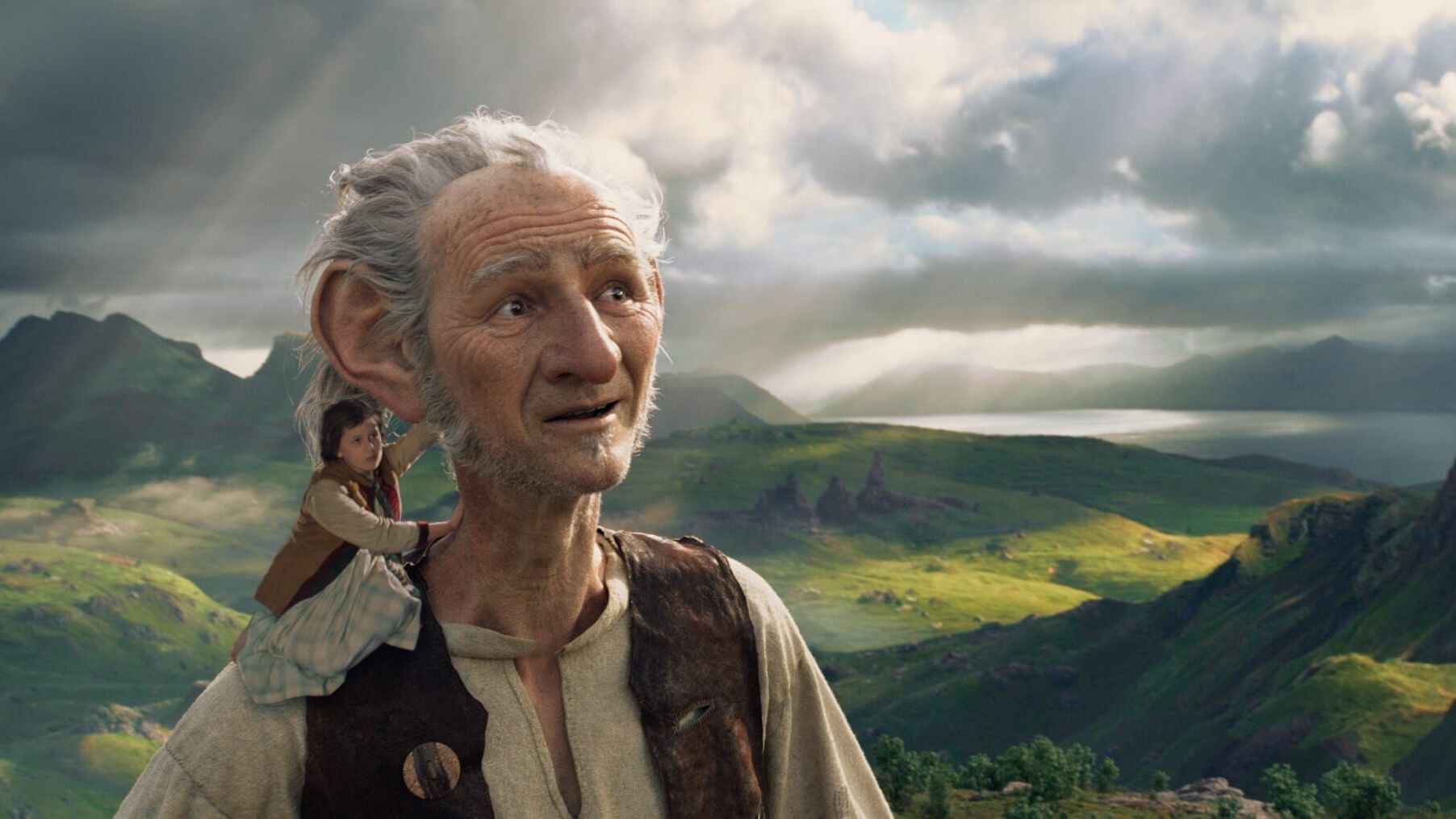Legendary filmmaker Steven Spielberg teams up with Disney for the very first time in his five-decade career to adapt the classic Roald Dahl novel The BFG, starring this year’s Best Supporting Actor Oscar winner Mark Rylance (“Bridge of Spies”). Doesn’t it all sound a little too good to be true? Sprinkle in that there has never been a film adaptation of the beloved children’s book (other than an animated TV movie), and that all of Spielberg’s top-tier collaborators have joined him here, including producer Kathleen Kennedy, composer John Williams, and cinematographer Janusz Kaminski. While this is a film that is almost hype-free due to its non-franchise intellectual property, it should be a no-brainer that all these combined forces could only make a truly heartwarming and dazzling film for all ages.
And yet, to be frank, this is a film that doesn’t work. “The BFG” is a fantastical bedtime story full of wonder and imagination, and yet in this adaptation, it is translated into something incredulously dull. The only thing worse than a poorly executed movie is a dull movie, and with all of its talent theoretically firing on all cylinders, it’s amazing that this bore is their product.
What it boils down to is the film’s lack of two essential pieces in making a movie feel fun or alive: spontaneity and tension. Take, for example, a sequence where The “Big Friendly Giant” (Rylance) takes young-but-bright orphan Sophie (Ruby Barnhill) to the Land of Giants where he catches dreams (in the form of colorful wisps) to later impress into the sleeping children of London. This is a moment that has all the likings to be as spectacularly wondrous as Avatar or Life of Pi, and if you’ve seen still images of the sequence, you’d be forgiven for thinking as such. However, the whole enterprise lacks any sort of urgency or surprise value to it, and even the camera movement, which intends to lend itself as a guide into this magical world, feels so pre-ordained that it cast a glaze over my eyes. Spielberg utilizes all of his typical conventions, which are more often than not marvelously executed, and yet here they’re all so obvious and on-the-nose that it’s impossible for them to generate any sense of magic.
To add insult to injury, Mark Rylance as The CGI-BFG has all the elements to be a charming and delightful character children will remember for years to come. And yet it comes down to the pacing. Something tells me that the CGI translation removed any sense of looseness or impromptu behavior. Every motion and step seems to follow a pattern and never strays into full or erratic behavior, despite playing a character that is meant to be loony and endearingly wacky. Compare this to a brilliant adaptation of a similarly loony Roald Dahl character: Willy Wonka. From his very first scene until his last, we never know what we’re going to get. He’s unpredictable and manages to feel so energized in both the mad-cap and sincere side of the character. The BFG character never gets room to try anything fun or challenge our expectations. I can only imagine that the emphasis on the animation took away any room for creative enlightenment. Or alternatively, perhaps the take on the character was simply too mild. I could’ve envisioned the BFG to come across as the way Yoda did in Empire Strikes Back, a great mix of wisdom and silliness. Neither are found in nearly the same capacity here.
The second element would be tension, or suspense. It seems as though everything in “The BFG” works exactly as it is meant to, and there’s virtually no conflict because character’s plans always seem to go as they intend to. Despite the presence of 9 child-eating giants, the sense of danger is never imminent (perhaps because the Land of Giants, where the giants live, is more than a hop-skip-and-jump away from London, where the giants are said to kidnap children from, yet never appear in), and the climax appears to be the most worry-free solution to any situation I’ve seen, children’s movie or otherwise.
In one particularly light and funny sequence involving the BFG and Sophie sitting for a royal breakfast, the film finally manages to break free of all of these criticisms for a solid, marvelous moment, where the audience finally gets to laugh and have some fun. There are no critiques to be had of this entire portion of the film. Sadly, it’s not enough to lift the weight that comes from the other sides of the film. Despite absolutely stunning visuals in every frame, the molasses pacing and lack of any unpredictability make this a bit of a slog to sit through.
The incorporation of CGI to a properly British children’s book in “The BFG” created a very poor match in a lack of ability to soar and unlock a world of imagination that Roald Dahl’s classic book is so ripe for. Never would I have ever expected that a Spielberg-Disney collaboration would produce something so uninspiring. It’s not that these giants are to be held to a higher standard, it only means that when their brainchild is truly unremarkable, the surprise is significantly higher. Despite all the makings to become a family classic, “The BFG” equates to one of the most sleepy and uninspiring movies of the year.
“The BFG” is rated PG for action/peril, some scary moments and brief rude humor. 117 min. In theaters everywhere this Friday.
H. Nelson Tracey
Nelson is a film director and editor from Denver based in Los Angeles. In addition to writing for Cinemacy, he has worked on multiple high profile documentaries and curates the YouTube channel "Hint of Film." You can check out more of his work at his website, hnelsontracey.com


